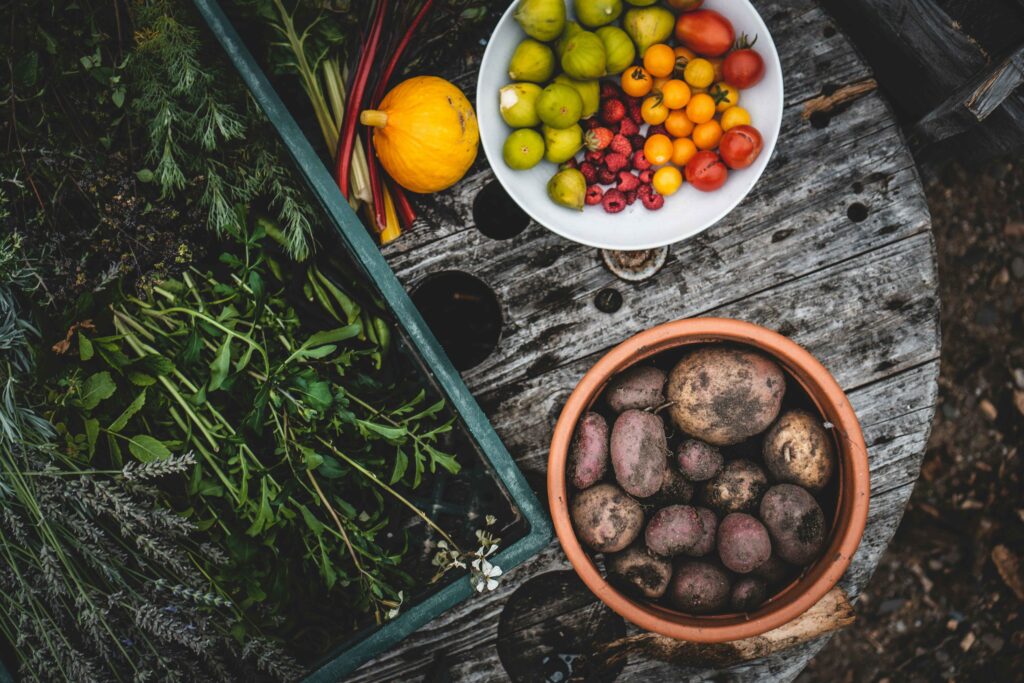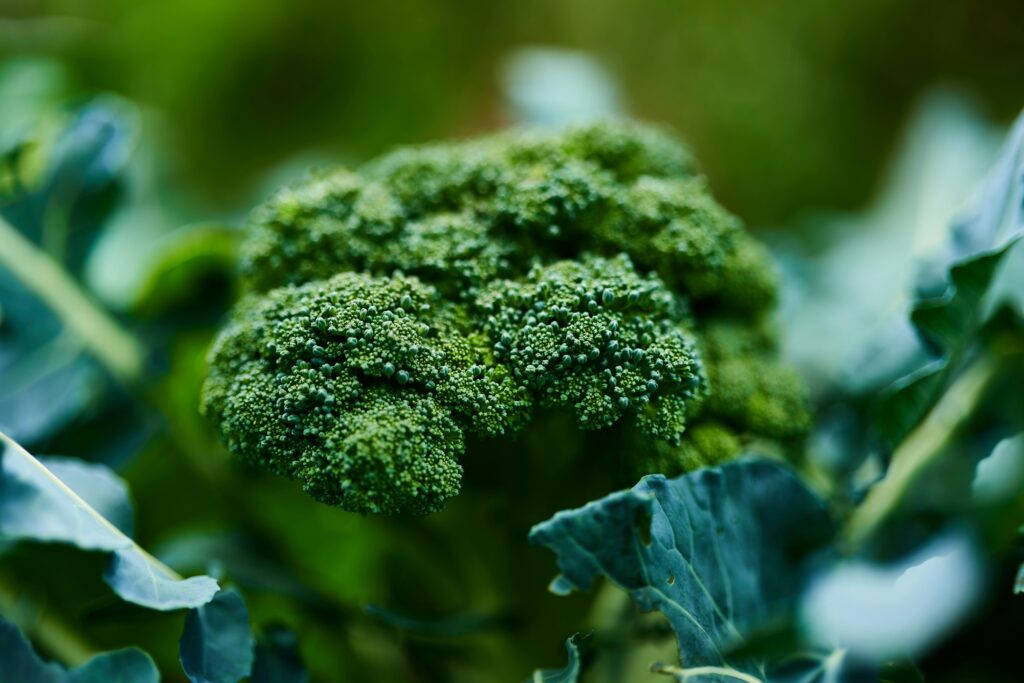If you’re aiming for a lifestyle that leans into self-sufficiency, growing your own vegetables is a great place to start. Not only is it cost-effective, it’s also a direct line to fresher food, a stronger connection with the land, and a real sense of personal resilience.
But as every grower quickly learns, timing matters. Australia’s vast and varied climates mean you can grow something productive in your patch almost every month of the year — but knowing what to plant and when can make all the difference. This guide walks you through the best vegetables to grow year-round in Australia, season by season, across different growing regions — with a clear, reliable, and practical lens.

First, Know Your Climate Zone
Australia isn’t one-size-fits-all when it comes to gardening. From the tropical north to the alpine south, growing conditions vary widely. To get the most from your garden, it helps to understand your local climate zone, the soil you’re working with and even how your land or garden is situated in relation to the sun. Broadly speaking, Australia falls into these main categories:
- Tropical (e.g. Darwin, Cairns): Hot and humid with a defined wet and dry season.
- Subtropical (e.g. Brisbane, Northern NSW): Warm with summer rainfall and mild winters.
- Temperate (e.g. Sydney, Melbourne, Adelaide): Four distinct seasons with moderate rainfall.
- Cool/Alpine (e.g. Canberra, Tasmania): Cold winters, short summers.
- Arid/Desert (e.g. Central Australia): Hot days, cool nights, low rainfall.
Once you’ve identified your zone, you can better choose vegetables that thrive — and stagger plantings for consistent harvests. Similarly, if you’re planning on making a move to create a self-sufficient lifestyle, you may like to work out what produce you enjoy the most to help influence which locations you’re choosing from!
Autumn & Winter Crops: Steady Greens and Root Heroes
As temperatures cool, growth slows — but that doesn’t mean your garden has to go dormant. In fact, many of the most nutrient-rich vegetables thrive in the colder months. Winter crops are generally hardy, frost-tolerant, and slower-growing, but they offer strong returns.
Best Vegetables to Grow in Autumn/Winter:
- Silverbeet: A reliable leafy green that survives frost and keeps producing.
- Kale: Cold-hardy and packed with nutrients — ideal for soups, smoothies, or crisping in the oven.
- Spinach: Quick to germinate and easy to grow in cooler conditions.
- Broccoli & Cauliflower: Big payoff vegetables if you’ve got the space and patience (they take 12–16 weeks).
- Cabbage: Great for winter salads, coleslaw, or fermenting into sauerkraut.
- Garlic: Plant in autumn for harvesting in summer — low maintenance, high reward.
- Carrots & Beetroot: Root vegetables thrive in loose, well-drained soil; sow small amounts regularly.
- Leeks & Onions: Slow to grow but essential pantry staples.
Tip: In cooler climates, use a greenhouse, cold frame or cloche to extend your growing window and give seedlings a head start.

Spring Planting: The Time to Reset and Sow Boldly
Spring is a busy, high-energy season in the garden. Soil temperatures rise, daylight increases, and the planting possibilities expand. This is the perfect time to build up your garden beds, start succession planting, and prepare for heavier summer feeders.
Best Vegetables to Grow in Spring:
- Tomatoes: Iconic Aussie home garden staple. Choose bush varieties for containers, vine types for trellising.
- Zucchini: Fast-growing and prolific — just one plant can keep you in steady supply.
- Cucumbers: Crisp and refreshing. Trellis them for vertical growing and better airflow.
- Corn: Loves heat, space, and consistent watering. Best planted in blocks (not rows) to improve pollination.
- Beans (Climbing & Bush): Quick to harvest and great for continuous picking.
- Lettuce & Asian Greens: These do well in spring and are ideal for salad gardens. Keep them shaded as the heat increases.
- Pumpkin & Squash: Needs room to roam — train along fences or garden edges.
Tip: Early spring can still bring frosts in temperate and alpine areas. Wait until the risk has passed before planting summer crops outdoors, or start seeds indoors.

Summer Gardening: Growth, Harvest, and Vigilance
Summer is peak productivity season — but it also brings heat stress, pests, and water challenges. Your garden will reward you generously if you manage these conditions carefully.
Best Vegetables to Grow in Summer:
- Chillies & Capsicum: These thrive in full sun and reward patience with long harvest windows.
- Eggplant: Needs warmth and a long growing season. Great for Mediterranean-style dishes.
- Okra: A heat-loving crop that’s underused in many Aussie gardens.
- Sweet Potato: Loves warmth and creeps across garden beds, suppressing weeds in the process.
- Rocket & Mizuna: Quick to grow but prone to bolting in extreme heat — plant in partial shade for best results.
- Basil & Herbs: Thrive in summer. Pair with tomatoes for pest protection and flavour synergy.
Tip: Mulch deeply, water early in the morning, and use shade cloth where needed to avoid sunburned veggies.

Autumn Reset: Sow, Rotate, and Restore
As summer crops finish up, autumn offers a chance to reset your garden, restore soil health, and start the cool-season planting cycle again.
Things to Do in Autumn:
- Add compost and organic matter to replenish beds.
- Plant green manure (like legumes) to improve soil fertility.
- Start cool-season crops early to beat the cold.
Some vegetables, like silverbeet, carrots, and spinach, can be planted almost year-round in many zones — making them great staples to rotate through.

Year-Round Stars: The Perennial Performers
While most veggies are annuals (meaning they complete their life cycle in one season), there are some that will stick around for years with the right care.
Best Perennials for Year-Round Supply:
- Asparagus: Takes a couple of years to establish but will produce for decades.
- Rhubarb: Hardy and rewarding. Harvest the stems only — the leaves are toxic.
- Perennial Spinach (e.g. Warrigal Greens): Native to Australia and perfect for warm climates.
- Herbs like rosemary, thyme, oregano: Low-maintenance and ideal for year-round harvesting.

Making It Work: Practical Tips for a Continuous Harvest
Growing food year-round in Australia is achievable, but it works best with a little structure and intention. Here’s how to keep the momentum going:
1. Succession Planting
Rather than planting all at once, sow small batches every few weeks. This means you’re harvesting in stages rather than dealing with feast-or-famine cycles.
2. Companion Planting
Match crops that support each other — like tomatoes with basil, or carrots with spring onions — to reduce pests and boost growth naturally.
3. Observe and Adjust
Pay attention to what thrives in your microclimate. Even within the same zone, two gardens 500m apart can behave differently due to sun, wind, and soil.
4. Keep a Garden Journal
Note what you planted, when, and how it performed. This helps you refine your growing plan with each season.
Be Realistic, and Enjoy It!
Self-sufficiency isn’t about doing everything at once. It’s about consistent, thoughtful steps. Growing your own vegetables year-round doesn’t require a huge plot or endless time — just a bit of planning, some local know-how, and a willingness to adapt.
So start with what you eat, learn as you go, and keep your hands in the soil. Whether it’s a handful of herbs on a balcony or a full veggie patch, every bit you grow is a move toward more independence, resilience, and connection with what feeds you.


